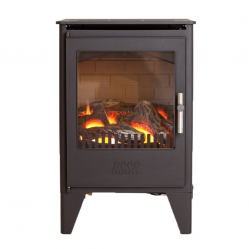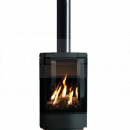Gas Stoves > Balanced Flue Gas Stoves

Balanced Flue Gas Fires
A balanced flue system is a great option for homes which do not have a chimney breast, and there is no option to locate a flue system up through the ceiling or roof. This flue system works by a 2-way pipe which draws air in through the external pipe casing for combustion and expels gases out into the atmosphere through the internal pipe. A balanced flue system is also referred to as a ‘closed combustion’ or ‘room sealed’ system due to the exchange of combustion gasses occurring within the appliance and flue system. A balanced flue system can be installed vertically up and out, or horizontal and straight out through the wall, depending on the position and requirements of the appliance.

